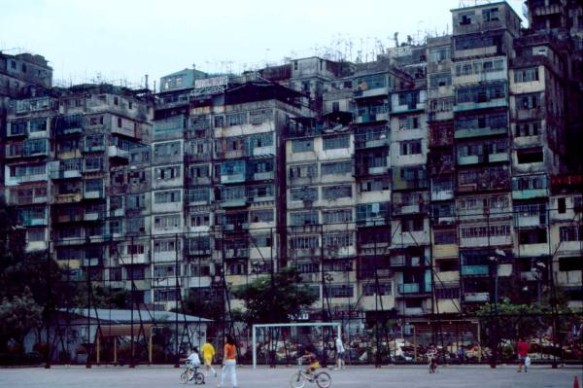Density Atlas Asks How Many People Can You Pack in a City Block?
It’s no secret that we advocate an urban future here at LifeEdited. With a world population topping out over 7B people, cities offer the clearest route to a bright, sustainable future.
But cities are not created equally. A city’s urban density often reveals more about its resiliency than its population suggests. Dense cities can manage transportation, energy, distribution of goods and human capital better than their spread out, low-density counterparts.
The problem is that density is not a monolithic metric. It is generally measured in 3 ways:
- FAR (foot area ratio) divides usable square footage of a building, block or development by its lot size; e.g. if a 1000 sq ft building sat on a 1000 sq ft lot, its FAR is 1 (1000/1000).
- Dwelling units (DU)/acre measures how the space is divided; e.g. that building with an FAR of 1, could either be 1 luxury or 4 x 250 sq ft efficiency dwelling units.
- Population/acre. This metric is useful because the number of people living in a dwelling can greatly vary; e.g. a block in San Francisco with the same FAR and DU/acre as another in Hong Kong might contain 50% less population because more people live in the Hong Kong units. Pop/acre captures the gross population regardless of how the area is divvied up.
Started by a group from MIT, Density Atlas helps you understand various city developments and neighborhoods from all of these perspectives. For example, it shows how the author’s Brooklyn home compares to the Mumbai slum, Dharavi. Brooklyn averages a respectable FAR of 5.8, has 195 DU/acre and 369 people/acre. While Dharavi has a lower FAR of 2.0, it has 255 DU/acre and a whopping 1274 people/acre. In other words, even though Dharavi’s FAR is 1/3 of Brooklyn’s, it has 24% more DU and 350% more people/acre!
Whether you’re a professional or armchair urban planner, Density Atlas reveals the variability and complexity of global urban development. It shows how city-living means different things in different contexts. More developed countries often have great FAR’s, but low DU and pops./acre, while developing countries often have lower FAR’s, but astronomical DU and pops./per acre.
We suspect the future lies somewhere between these two camps–where the efficiency and amenities of modern cities is alloyed with the developing world’s willingness to get close to your neighbor.
We’d love to hear what you think.
via Density Atlas
Image via flickr





